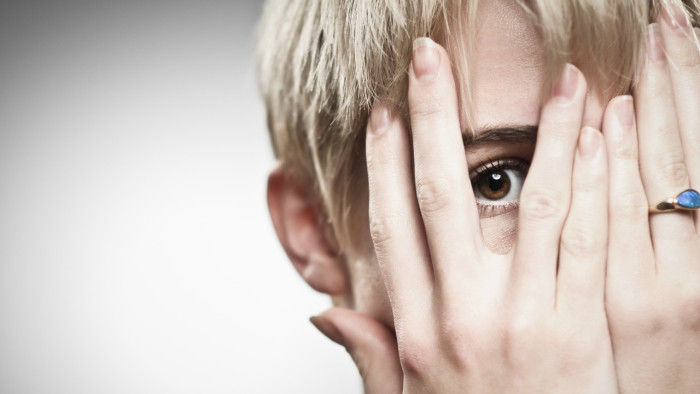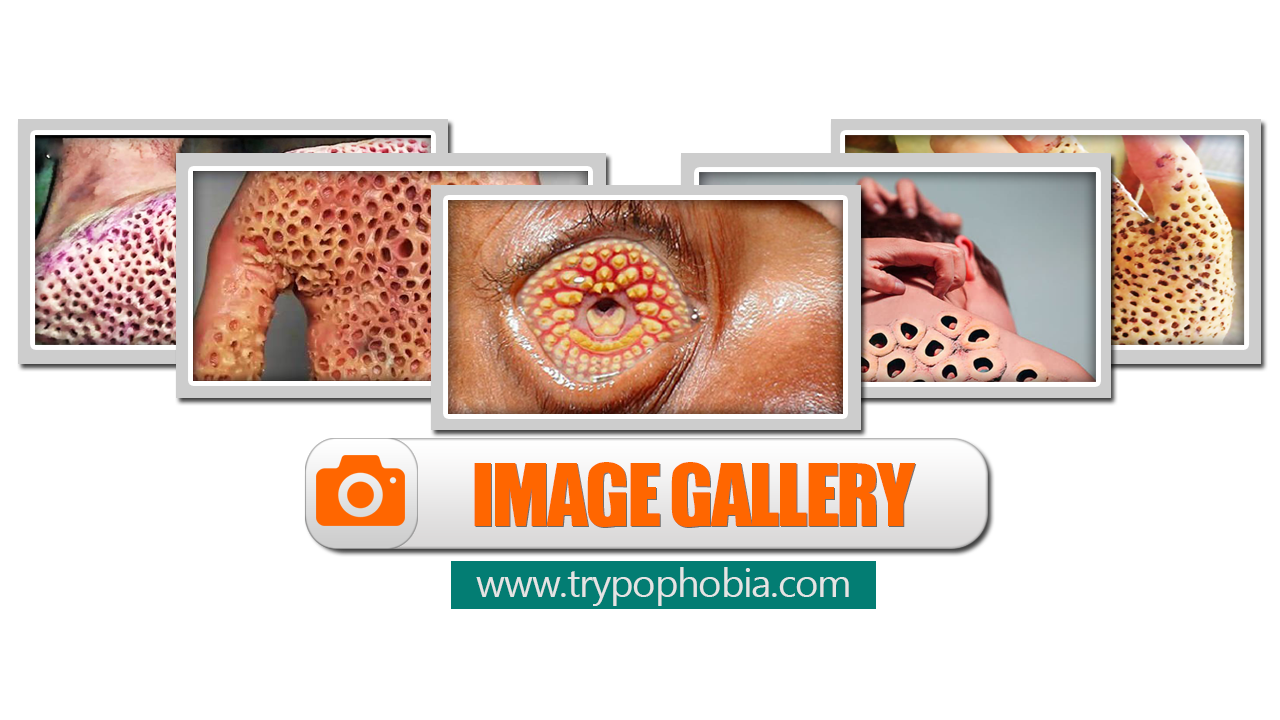Are You A Trypophobe?
It is fairly common for a person to have fears. Some people are afraid of snakes or anything that crawls. Some people are afraid of heights, and there’s even this cliché fear, the fear of falling. In the scientific world, this is called phobia. The NHS described phobia as a debilitating and overwhelming fear of an object, place, situation, and feeling. If the fear becomes severe, the person may suffer distress in his or her everyday life and would try to veer away from the cause of their fears. In some cases, some individuals may even have panic attacks.
Recently, the internet is buzzing of yet another fear and people have been claiming of themselves as Trypophobes. You might be one them and you just didn’t know! Images located here will tell you if you have it or not.
Were you uncomfortable?
Did you have goose bumps?
Did you have skin itching?
Were you nauseated?
Were you disgusted?
If you answered “yes” to all the questions above then surely you are suffering from Trypophobia. It is a condition wherein a person experiences an aversion or fear of clusters of holes. People who suffer from this have visceral reaction when they see an object and/or animals with associated patterns or clusters of roughly circular shapes. Although this phobia is not officially listed as a mental disorder under the American Psychiatric Association’s Diagnostic and Statistical Manual of Mental Disorders, thousands of people are now claiming of having it.
Trypophobia garnered media attention when the TV show American Horror Story included a character suffering from this fear. Most viewers were disturbed by the images and promotional posters used in the show and criticized it for their insensitivity towards people who have this proposed disorder.
What Causes Trypophobia?
Trypophobia was first recognized in 2005 by scientists and since then people have been openly discussing and comparing notes of their causes and symptoms. Scientists Geoff Cole and Arnold Wilkins from the University of Essex’s Center of Brain Science first published a study on this case. They believe that Trypophobia, the fear of clusters of holes, is based on biological revulsion. Another reason for the discomfort they considered is the geometry of the holes making extreme stress to the brain.
Another study done in 2017 on the fear of clusters of holes suggested that Trypophobia is a response to alert a person to the presence of parasites and other diseases and the discomfort stems from a subconscious fear of venomous animals. Further investigations done have shown that this condition may be linked to anxiety of parasites such as ticks. However, more scientific research is needed in order to specify the real cause of the said phobia.
It is just Math, not Holes
Phobias exist due to two reasons, first is due to learning/experience. People who are afraid of dogs might have been bitten by dogs in the past. Second is due to the innate evolutionary mechanisms such as the fear of snakes and spiders. Most often than not, there is a presence of threat leading to fear.
The same could not be said with Trypophobia. There is no imminent threat present, it’s just that the images triggering the fear of clustered of small holes has little in common other than their configuration.

How Trypophobes see themselves
According to standing theories, the answer to the real cause of the phobia comes from the configuration of the images. It has been reported that people who do not categorize themselves as Trypophobes also feel disgusted upon seeing Trypophobic trigger images. This is because the configuration of the images give of mathematical properties causing visual discomfort or headache.
Images with mathematical properties can’t be processed immediately, the brain requires more oxygenation before it can fully grasp the image. It was proposed that the discomfort is present because normally people would tend to avoid looking at the images due to the excessive brain oxygenation it requires.
So the next time you see Trypophobic images, it’s maybe not the fear of clusters of holes, just fear of some good mathematical properties!
Symptoms and Treatment of Trypophobia
A Trypophobe will suffer emotional reactions upon seeing clusters of holes such as lotus pods, holes made by worms, holes in wounds and others. Typically, Trypophobic people have the following sensations:
- Nausea
- Fear of dying
- Breathlessness
- Dizziness
- Increased heart rate
- Trembling
- Sensation of skin crawling
- Panic attacks
- Sweating
- Feeling of itchiness
- Body shaking
- Discomfort
Since fear of clusters of holes, or Trypophobia is still not medically accepted, there is also no documented cure for it. However, there are available treatments for phobias in general. These treatments may vary from person to person and by severity. These may include self – help treatments, exposure treatments, therapy, counseling, hypnosis, and medications. Cognitive behavior therapy is also used to help sufferers be in control of their thought patterns by allowing them to recognize that their fear is only in their imagination.
Facing your Fear of Clusters of Holes
If you are a Trypophobe, you have options to let go of your discomfort of seeing clusters of holes. If you are severely suffering from it, having panic attacks and difficulty of breathing, your best choice would be going to your doctor and asking for prescription for antidepressants, tranquilizers, or beta – blockers.
But if you think it is still manageable, then you can do self – help treatments. Although the rate of success may differ, trying it won’t do you harm. Below are self – help strategies you might want to consider:
- SGD or Small Group Discussions – join group therapies with people who suffer the same phobia. You will be more accustomed to talking about your fear freely and the success stories of others will motivate and encourage you as well.
- Desensitization – otherwise referred to as Exposure therapy, a method where your therapist will expose you to your phobia in small doses until such time that your system will get immune to it thereby accepting it as a normal phenomenon.
- Cognitive Behaviour Therapy – This is where you talk with your therapist and you will be encouraged to set and achieve your goals. This is also called a talking therapy where you freely talk about your thoughts and feelings towards your fear and its triggers. The counselor will try to understand what causes your fear and will come up with a plan to help you deal with the underlying causes and triggers.
- Lifestyle changes – Adjusting your lifestyle is a good way to start. These include switching to a healthier lifestyle by doing exercise, eating healthy foods, developing good sleeping habits, and avoiding triggering food and drinks such as coffee.
- Relaxation techniques – You may also try enrolling to Yoga classes and other exercise – based techniques.
Studies on Trypophobia
About 16% of the global population have reported to be experiencing Trypophobia, however, some scientists are saying that this phobia is not actually real. To point it out, the fear of clusters of small holes is not recognized as a disorder. Researchers at Emory University did a study on this fear in relation to clusters of holes and clear the suspicions once and for all.

Trypophobes react adversely to clusters of holes
In this study they stressed out the fear and disgust are two different emotions. Fear is a response to perceived danger with activation from the sympathetic nervous system, this is where the ‘flight or fight’ response is taking place. On the other hand, disgust is a reaction to contamination and is associated with the activation of the parasympathetic nervous system. But when fear and disgust are experiences excessively, both can be associated with phobia.
In their research, the scientists examined the reactions of individuals to images that cause Trypophobia. They used pupillometry in order to differentiate fear and disgust in Trypophobic response. In the experiments, they compared the changes in the pupil size of the participants when they are shown images of holes and images of threatening animals. They also included control images, neutral photos of animals and other objects that do not trigger Trypophobia.
The results of the study have shown that there is dissociation between pupil responses when viewing images with holes than images of threatening animals. The images with holes resulted in bigger pupil size changes compare to threatening animals and neutral images. This result suggests that the hypothesis of the study that the Trypophobic response by the participants is associated with parasympathetic nervous system and thus more of an emotional reaction to disgust than fear.
Phobia or not, it’s pretty safe to admit that images with holes in it are disgusting and unsettling in so many levels. Even famous personalities have admitted to have it, one of the many is the model and reality star Kendall Jenner.
Everyone has something they fear, it may not be a legit phobia but the emotions it elicits are traumatic just the same. Some others are skeptical of the phobia saying that it’s an exaggeration brought about by the buzz of the internet since 2005 but somehow, there are few people out there with episodes when facing everyday objects such as washing sponge and cheese. So no judgment here, just an understanding.


